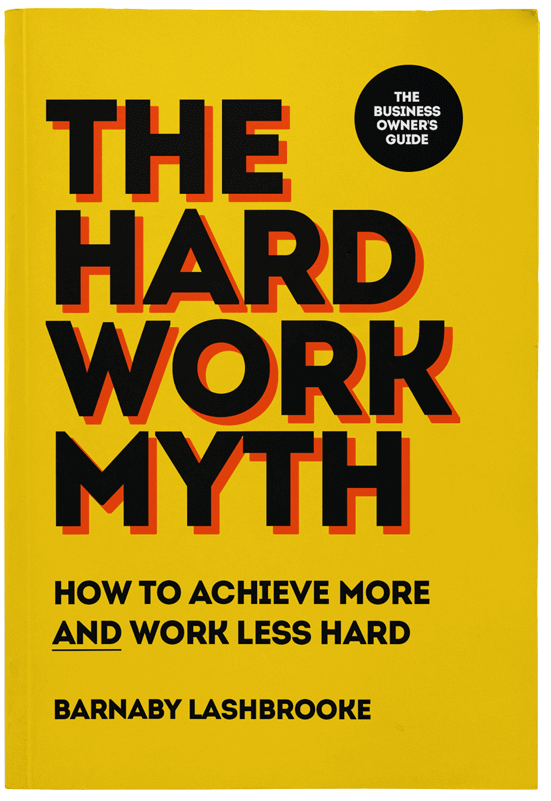There is little more annoying than a 30-minute meeting that could have been an email. We tell ourselves it’s all part of the job, but do meetings really still have a place in the workplace, or have we – and the way we communicate with our colleagues – evolved?
Doodle’s state of meetings report found almost a quarter of US professionals and 30% of UK professionals have five or more hours of meetings every week, and almost three quarters (71%) feel they are losing time every week due to poorly planned, unnecessary or canceled meetings.
Not even remote workers are safe from this productivity sinkhole. According to a report by Owl Labs, 2020 saw a huge spike in video meetings (60% of respondents were using video more than before COVID-19). Evidently, one effect of increased remote work during the pandemic is overcompensating for the distance.
But surely we need meetings? We are not islands, organizations are made up of teams and teams must pull together to produce the best results. Yet plenty can be done to improve the state of play. We can change the way we schedule, arrange and envision meetings. We can be more sparing and specific in how we use them. We’ll cover all that and more below. Here’s what’s coming up...
1. Could a blanket ban on meetings really work?
|
2. Which situations merit a meeting?
|
3. How should we manage the guest list?
|
4. Why meeting agendas are so useful
|
5. Why asynchronous communications may be better
|
6. Top tips for maximum-productivity meetings
|
1. Could a blanket ban on meetings really work?
“People who enjoy meetings should not be in charge of anything.”
Thomas Sowell
When SpaceX CEO Elon Musk was leading Tesla, he sent an email to his colleagues that specified a new set of “productivity recommendations” around company meetings. His rules included limiting large or frequent meetings and, he added:
“Walk out of a meeting or drop off a call as soon as it is obvious you aren't adding value. It is not rude to leave, it is rude to make someone stay and waste their time.”
Despite his aversion to meetings, Musk doesn’t suggest a blanket ban. This is because meetings can be one of the best conduits we have to relay information, and share ideas and opinions. In Doodle’s aforementioned survey on meetings, 100% of respondents said they thought face to face meetings helped them to understand people’s opinions and arguments better.
A survey that asked 617 US workers what “gets in the way of your work” found “wasteful meetings” got the highest rating, at 57%, ahead of emails and phone calls. (Source: The Harris Poll)
|
We can, however, change the way we go about them, to cut out the fat and ensure that never again will someone utter the words: “I got nothing done, my whole day was just meetings.”
Try a blanket ban on any constantly recurring meetings in your calendar. If you do have meetings, make sure they aren’t scheduled for the sake of it. Only have meetings when there's something specific to do or to talk about, because talking about what you’re going to do is never as useful as actually doing it.
You have to be as ruthless as Musk when it comes to knowing what is and isn’t worthy of your team's time.
Another idea, which tends to be really popular, is to assign one or two days each week which are entirely ‘meeting free’. On these days, people can focus on deep work that’s better done alone, and work out their schedules for the week accordingly.
2. Which situations merit a meeting?
“Any committee that is the slightest use is composed of people who are too busy to want to sit on it for a second longer than they have to.”
Katharine Whitehorn
Meetings are called for all kinds of reasons. Is this a follow up? Catch up? Brainstorming session? Decision making? Team building? Mandatory Monday meeting? They come in all shapes and sizes, but they are not all created equal.
To avoid time wastage, stop using ‘hold a meeting’ as your default option. Instead, before scheduling any meeting ask yourself this question: how could this meeting be avoided entirely?
86% of US workers feel that meetings with no result have become normal in their business. (Source: Matchware)
|
There are plenty of alternatives to a sit-down session, especially if a meeting is just a follow-up or for information gathering. Can you make a call to a few key individuals and get everything sorted? Can you send an email to the group and ask for updates?
Some things do merit meetings, including onboarding new recruits, to collect feedback from clients, to discuss sensitive HR matters, to make sense of complex accountancy or legal issues, or to see friends in need of business help or advice – but stale staff meetings are crying out for a refresh, and most things can be replaced with asynchronous communications (more on that later).
So, start interrogating those ingrained habits and you can reap the benefits.
3. How should we manage the guest list?
“Meetings should have as few people as possible, but all the right people.”
Charles W. Scharf
One of the most famous rules for streamlining meetings is the ‘two-pizza rule’, championed by Amazon leader Jeff Bezos. In short, no meeting should be so large that two pizzas can't feed the whole group. Aside from the fact that Bezos’ rule is wide open to interpretation (depending on your view of portion sizes), he has a point.
Although we want people to feel involved and be given a chance to contribute, too many cooks will spoil the broth. Notes can be taken, meetings can be recorded and critical information can be passed on without everyone needing to be there in real time. Taking someone away from their work will hurt their productivity, and have a collective impact on your company’s output too.
It isn’t just employee morale that can suffer from superfluous and poorly planned gatherings: $400BN dollars are wasted every year in the US alone as a result of pointless meetings. (Source: Doodle)
|
Knowing the exact purpose of a meeting will help you keep the guest list to an absolute minimum. You need to fight that temptation to think that everyone who could possibly be affected by the meeting needs to be there.
Not being in a meeting shouldn’t be seen as an insult or demeaning for an employee. If you have a culture where meetings are a known last-resort with distributed agendas, minutes or video recordings circulated to those who may wish to look later, then most employees will be happy to save the time that would have been spent nodding mutely through a presentation.
4. Why meeting agendas are so useful
“Communication works for those who work at it.”
John Powell
Writing and circulating a meeting agenda can serve two useful functions. The first is to help you decide whether the situation merits a meeting at all. If the only points on your agenda are to review what happened this month, then it’s pretty clear that an email would suffice.
The second is to keep the meeting on track. The best meetings are structured, time-limited and overseen by a host who makes sure the agenda is stuck to. People have a habit of going off on tangents, and it’s up to the host to bring them back to the point. This saves time wastage.
If your meeting involves tech: screening videos, presentations or demonstrating hardware, then set this up well in advance. Don’t leave your prep to the last minute, and make sure you have tech assistance if you need it. There’s nothing worse than a room full of people tapping their pens and waiting for a blank screen to be switched on.
It sounds simple, but following some basic rules for preparation can avoid many common stumbling blocks for meetings.
Some organizations find it valuable to collect post-meeting feedback. Anonymous surveys can help you make powerful changes and scrutinize the negative impact of meetings. Try asking your employees the following questions:
- Did you feel you needed to be in that meeting?
- How many times did you speak or participate during that meeting?
- What do you think we could have done to improve that meeting?
- How many hours worth of meetings do you have in your calendar this week?
5. Why asynchronous communications may be better
“Can you repeat the part of the stuff where you said all about the things?”
Homer Simpson
One of the latest trends in efficiency is the growing use of asynchronous messaging to replace meetings where everyone’s live presence and attention is required. This is a type of communication that doesn’t take place in real time, but at a time of the participants’ choosing. Therefore email is a form of asynchronous communication while talking on the phone is synchronous.
It’s particularly useful for organizations that have teams who work flexible hours or job share, or work across multiple time zones and for whom synchronous meetings such as video calls would be awkward, taking place during highly unsociable hours.
To replace a live meeting, a video message or presentation might be posted on a company’s intranet or a Slack discussion channel with people invited to write or voice record their thoughts and feedback beneath the video. Crucially, there is absolutely no expectation for an immediate response.
It also means there is an archive of watchable content that people can refer to at a later date (and meeting minutes need never be taken). The beauty of this method is that people can work uninterrupted and participate in accordance with their own schedules.
6. Top tips for maximum-productivity meetings
“It is not necessary to do extraordinary things to get extraordinary results.”
Warren Buffett
Some quick and simple solutions for better quality meetings that could be implemented tomorrow:
- Stand up. If you want a simple way to create urgency and time-limit your meetings, don’t sit down. With no one allowed to settle into the comfortable folds of a beanbag, you can speed through your agenda and then disperse.
- Don’t book a meeting room. If you have no designated space for a meeting, no one feels the need to extend the session to make it 'worth it'. You simply gather, in a kitchen or corridor, say your bit, then leave without hanging around.
- Brainstorm first. Make sure you and others don’t come to a meeting empty-handed with the hope that someone else will come up with the good ideas. Create a new rule: everyone should show up to a meeting with one good idea that they’ve developed, or they shouldn’t come. Use the meeting to develop the best ideas, not to sit there thinking.
- Use breakout rooms. Most meeting software will allow the host to split people into smaller groups. This can increase participation for those who might otherwise be mutely observing, and it’s really useful for partner or small group work or ‘getting to know each other’ situations. You can randomly create groups or assign specific users to specific groups.
- Take recordings. To cut down on the number of meeting participants, make audio or video recordings of your meetings and make them available to your teams, so if someone genuinely believes they needed to be there, they can catch up, even if they didn’t get to contribute in the moment.
- Declare a meeting-free day. This company-wide designated day is entirely free from meetings, meaning employees are free to get on with their own projects.
And finally, don’t underestimate the impact of pointless meetings on organizational productivity. It’s not only the time people spend in meetings that must be accounted for, it’s also the planning, practical and mental preparation required to take part and the time spent getting back on track afterwards. Organizational psychologists call this latter part “meeting recovery syndrome” which is the time spent cooling off and regaining focus after a useless meeting. The hours lost to pointless meetings also has a huge collective financial cost. You can use HBR’s meetings cost calculator to work out what meetings may be costing your business.







